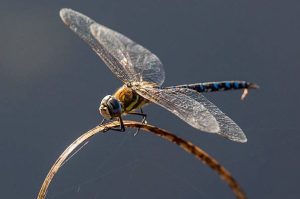Unveiling the Mystery: Insects and Light – Research Highlights Confusion, Not Attraction
For years, the assumption that flying insects are irresistibly drawn to bright lights has been a pervasive belief among scientists and poets alike.
However, a recent study challenges this notion, suggesting that artificial lights at night may, in fact, disrupt the innate navigational systems of flying insects, leading them into a state of confusion around various light sources.
Illuminating the Misconception
The traditional belief that insects are naturally attracted to light has been debunked by researchers who propose a different explanation.
Tyson Hedrick, a biologist at the University of North Carolina, Chapel Hill, not involved in the study, explained, “Insects have a navigational problem. They’re accustomed to using light as a cue to know which way is up.”
Instead of being drawn towards light, insects tend to “tilt their backs toward the light,” according to Sam Fabian, an entomologist from Imperial College London and co-author of the study published in the journal Nature Communications.
The research involved attaching tiny sensors to moths and dragonflies in a laboratory setting, capturing “motion-capture” videos of their flight, similar to how filmmakers track actors’ movements.
How Artificial Lights Confuse, Not Attract, Flying Insects

High-resolution cameras were also used to observe insects swirling around lights at a field site in Costa Rica. The findings revealed that rather than being attracted, insects often experience midair confusion when exposed to artificial lights.
Dragonflies, in particular, were observed circling endlessly around light sources with their backs facing the beams. Some insects even flipped upside down and crash-landed when exposed to lights shining directly upward, resembling searchlights.
The study demonstrated that insect flight was least disrupted by bright lights shining straight downward.
Avalon Owens, a Harvard entomologist not involved in the research, highlighted the impact of artificial lights on insects’ orientation.
“For millions of years, insects oriented themselves by sensing that the sky is light, the ground is dark,” Owens explained. The advent of artificial lights has introduced a new challenge for these creatures, altering their age-old navigation systems and leading them into states of confusion rather than attraction.

